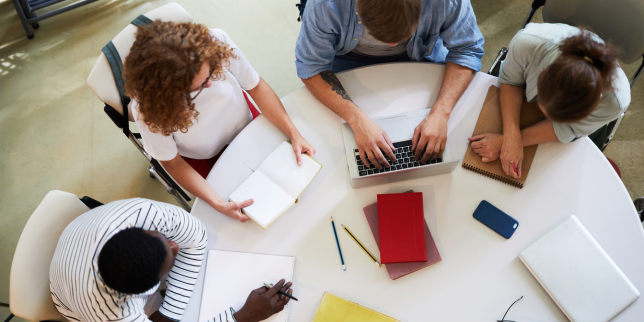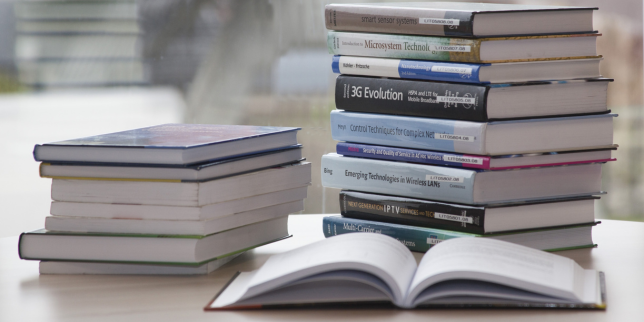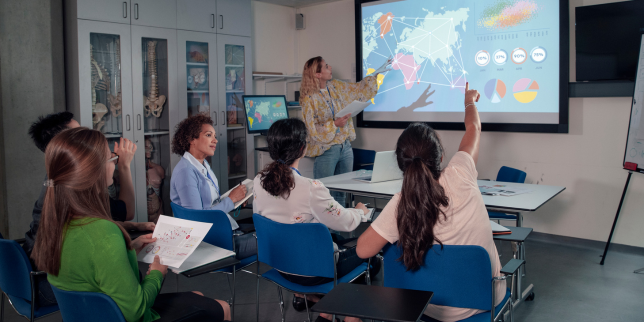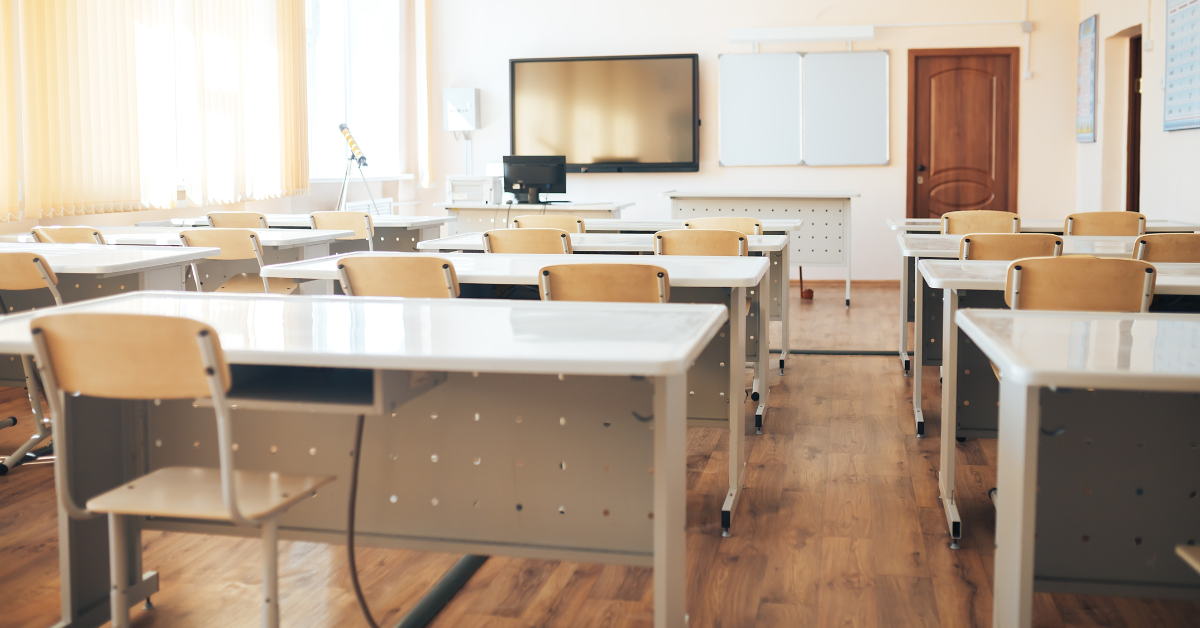Education is more than just imparting knowledge; it’s about creating an environment that nurtures students and enhances their learning experience. Educational facilities play a pivotal role in shaping students’ journeys, providing them with the tools and resources they need to thrive academically and personally.
From state-of-the-art libraries to interactive classrooms, these spaces have the power to inspire and empower young minds. In this blog post, we’ll explore eight innovative ways in which educational facilities can elevate the student experience.
Whether it’s embracing technology or fostering a sense of community, these strategies are designed to unlock the full potential of every student and create an environment where learning becomes an exciting and fulfilling adventure. Let’s get started.
1. Creates a Positive and Inclusive Learning Environment

A positive and inclusive learning environment is essential for students’ overall experience and academic success. Educational facilities can foster such an environment by promoting respect, acceptance, and diversity among students and staff. This can be achieved through implementing anti-bullying policies, organizing diversity awareness programs, and celebrating various cultural events.
Additionally, the physical environment should be welcoming and comfortable, with well-maintained classrooms, common areas, and recreational spaces. By prioritizing a positive and motivating environment, educational facilities can ensure that students feel safe, valued, and supported, leading to improved engagement, motivation, and a sense of belonging among learners.
2. Technology Makes Learning Easier
Incorporating modern technology into educational facilities can greatly enhance students’ learning experience. By utilizing tools such as interactive whiteboards, tablets, educational software, and online resources, educational institutions can offer dynamic and engaging learning opportunities. As highlighted by the team behind AppsAnywhere, there are higher education software schools can use to cut time and make learning easier. Technology allows for personalized learning experiences, catering to individual student needs and learning styles.
Moreover, technology enables seamless communication and collaboration between teachers and students, facilitating instant feedback and remote learning capabilities. By embracing modern technology, educational facilities can empower students to become tech-savvy, adaptable learners, preparing them for the digital age and equipping them with essential skills for their future endeavors.
3. Promotes Collaborative Learning Opportunities

Encouraging collaborative learning within educational facilities can significantly enhance students’ educational experience. By promoting teamwork and cooperation, educational institutions foster a supportive and interactive learning environment. Collaborative activities, such as group projects, discussions, and problem-solving exercises, enable students to engage in critical thinking, communication, and negotiation skills.
Working together in diverse teams allows students to gain different perspectives, learn from their peers, and develop important social skills. Moreover, collaborative learning cultivates a sense of responsibility and accountability, as students learn to contribute to a shared goal. By actively promoting collaborative learning opportunities, educational facilities empower students to develop valuable interpersonal skills and prepare them for successful teamwork in their future academic and professional pursuits.
4. Offers Supportive Counseling and Mental Health Services
Recognizing the importance of mental health and well-being, educational facilities play a vital role in supporting students’ emotional and psychological needs. By providing access to supportive counseling and mental health services, educational institutions create a safe and nurturing environment for students to thrive academically and personally. Trained counselors and mental health professionals can offer individual or group counseling sessions, workshops on stress management and coping strategies, and resources for addressing mental health concerns.
This proactive approach helps students develop resilience, improve their self-esteem, and manage challenges effectively. By prioritizing mental health support, educational facilities demonstrate a commitment to the holistic well-being of students, fostering an environment where students feel supported, understood, and empowered to reach their full potential.
5. Provides Accessible Resources and Learning Materials

Ensuring accessibility in educational facilities is crucial for creating an inclusive learning environment. By offering accessible resources and learning materials, educational institutions cater to the diverse needs of students. This includes providing materials in multiple formats, such as braille, large print, or audio formats, to accommodate students with visual impairments. Additionally, digital accessibility measures should be implemented, making online resources and platforms accessible for students with disabilities.
Educational facilities can collaborate with disability support services to identify and address accessibility barriers, ensuring that all students have equal access to information and educational materials. By providing accessible resources, educational facilities promote equity, diversity, and inclusivity, allowing every student to fully participate and engage in the learning process.
6. Fosters Teacher-Student Relationships and Mentorship Programs
Educational facilities can prioritize these relationships by promoting open communication, trust, and mutual respect between teachers and students. By creating a supportive and nurturing environment, students feel comfortable seeking guidance, sharing concerns, and actively participating in the learning process. Mentorship programs further enhance this bond by connecting students with experienced mentors who provide guidance, support, and advice.
These programs foster personal and academic growth, helping students set goals, develop skills, and navigate challenges. By fostering teacher-student relationships and implementing mentorship programs, educational facilities empower students, enhance motivation, and create a sense of belonging within the educational community.
7. Encourages Extracurricular Activities and Clubs

Promoting extracurricular activities and clubs within educational facilities offers students valuable opportunities beyond the classroom. By encouraging participation in a diverse range of extracurricular activities, such as sports teams, arts clubs, debate societies, and community service groups, educational institutions foster holistic development. These activities enable students to explore their passions, develop new skills, and build meaningful relationships with peers who share similar interests.
Extracurricular involvement also enhances teamwork, leadership, time management, and problem-solving abilities. Furthermore, participating in clubs and activities cultivates a sense of belonging and school pride. By encouraging extracurricular engagement, educational facilities provide a well-rounded educational experience that promotes personal growth, social connections, and the exploration of diverse interests.
8. Incorporates Real-World and Practical Learning Experiences
Educational facilities can enhance students’ learning experiences by incorporating real-world and practical learning opportunities. By connecting classroom concepts to real-life applications, educational institutions enable students to see the relevance and practicality of their studies. This can be achieved through internships, field trips, guest speakers, and hands-on projects.
These experiences allow students to apply theoretical knowledge, develop problem-solving skills, and gain valuable insights into various industries and professions. By bridging the gap between theory and practice, educational facilities prepare students for future careers, instill a sense of confidence, and foster a deeper understanding and appreciation for the subjects they are studying.
Takeaway
Educational facilities have a significant role in improving students’ overall experience. By creating positive and inclusive learning environments, incorporating modern technology, promoting collaborative learning, offering supportive counseling and mental health services, providing accessible resources, fostering teacher-student relationships, encouraging extracurricular activities, and incorporating real-world and practical learning experiences, educational institutions can empower students, enhance their engagement, and prepare them for success in both academic and personal endeavors.
These efforts contribute to a well-rounded education that nurtures the holistic development of students and equips them with the necessary skills for their future endeavors.


